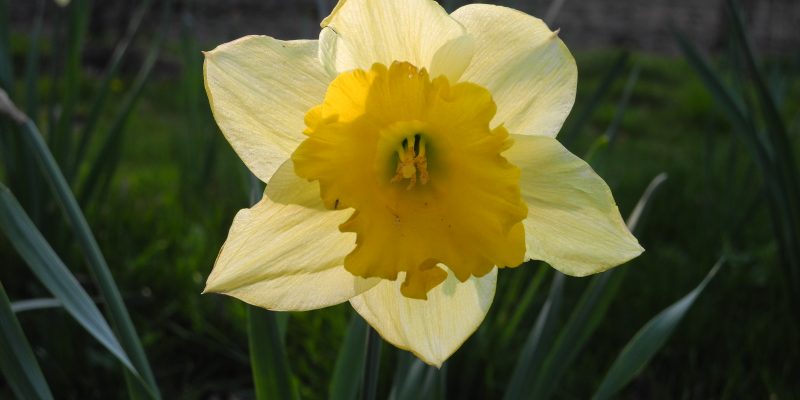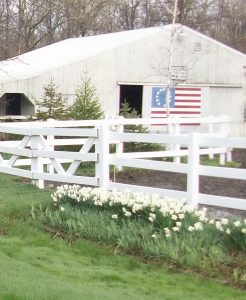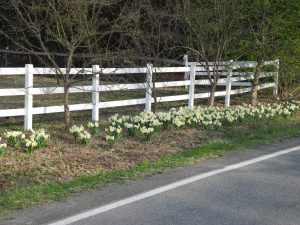
The New York Botanical Garden planted 150,000 daffodils last fall, a start in their plans to celebrate their 125th anniversary. Ultimately, the garden intends to plant one million daffodils. An announcement stated, “Nothing quite captures the feeling of the coming of spring like a hillside blanketed with yellow and white blooms, each flower signaling a return to longer days and warm nights.” William Wordsworth Longfellow knew this, too, and his poem reflects his delight:
“…my heart with pleasure fills,
And dances with the daffodils.”
How about you? Planted any daffodils lately? If not, why not? They do very well in Gardiner, and are a sure sign that warmer days are on the way. Daffodils may be planted “Brown or Green.” Brown is the usual condition of bulbs widely available and put in the ground in October or November. But daffodils retain their foliage until well into June, or even July, and could be lifted, divided, and planted then, too, when they are “Green.” In fact, if adding additional daffodils to a location, planting green is probably the way to go.

Daffodils along Albany Post Road
If you have daffodils in your yard this spring, take a look at them. Are there clumps of long, skinny leaves, and no or few flowers? Daffodils bloom prolifically for years, but eventually, through below ground subdivision, become so crowded that no flowers appear. Time to dig them up, and re-plant them “Green.”
Years ago my gardens started out with a few dozen bulbs, both yellow and white. Eventually, their blooms were disappointing, so I began the process of digging and dividing them. It’s hard work.
First, fill a bucket half way with water, gather your gloves and a stout spade or shovel. Sink the shovel into the ground about an inch away from the green leaves of the clump and work around it. Tilt the shovel back, and a huge bunch of bulbs will appear, all stuck together. Separate them into individual bulbs, and plop them into the pail with the water. Don’t be surprised when all the leaf stalks wilt and flop over; that’s normal.
Then go to wherever you want to establish some more daffodils. With the spade or shovel, dig a slit in the soil and drop in one bulb with the leaves attached. You’ll probably find a variety of bulb sizes, small to large. Doesn’t matter, plant them all. The larger bulbs may bloom the next spring, the smaller ones in a year or two. Spacing can be as you wish, but at least a foot apart is normal.
The advantage of planting daffodils green in the spring is that you can see exactly where they went. While planting in the fall, I’ve more than once sliced a buried bulb in two, not knowing it was there. Spring planting avoids this dilemma, and lets you see how the planting bed will look in future years, be it long, winding, circular, or curving.
So, lots of holes to dig, lots of bending and stomping the soil back. Nice if you have a friend, child, or spouse to help. You dig; they drop the bulb in the hole. You can spread out the work over days, or even weeks. As long as the leaves are green, you can lift them and move them. The reward will be many more daffodils in full flower for many springs to come.
You can see the result of my efforts along the west side of Albany Post Road, just south of Cooks Lane. The hundreds in bloom there came from just a few dozen, divided and replanted over the years.
